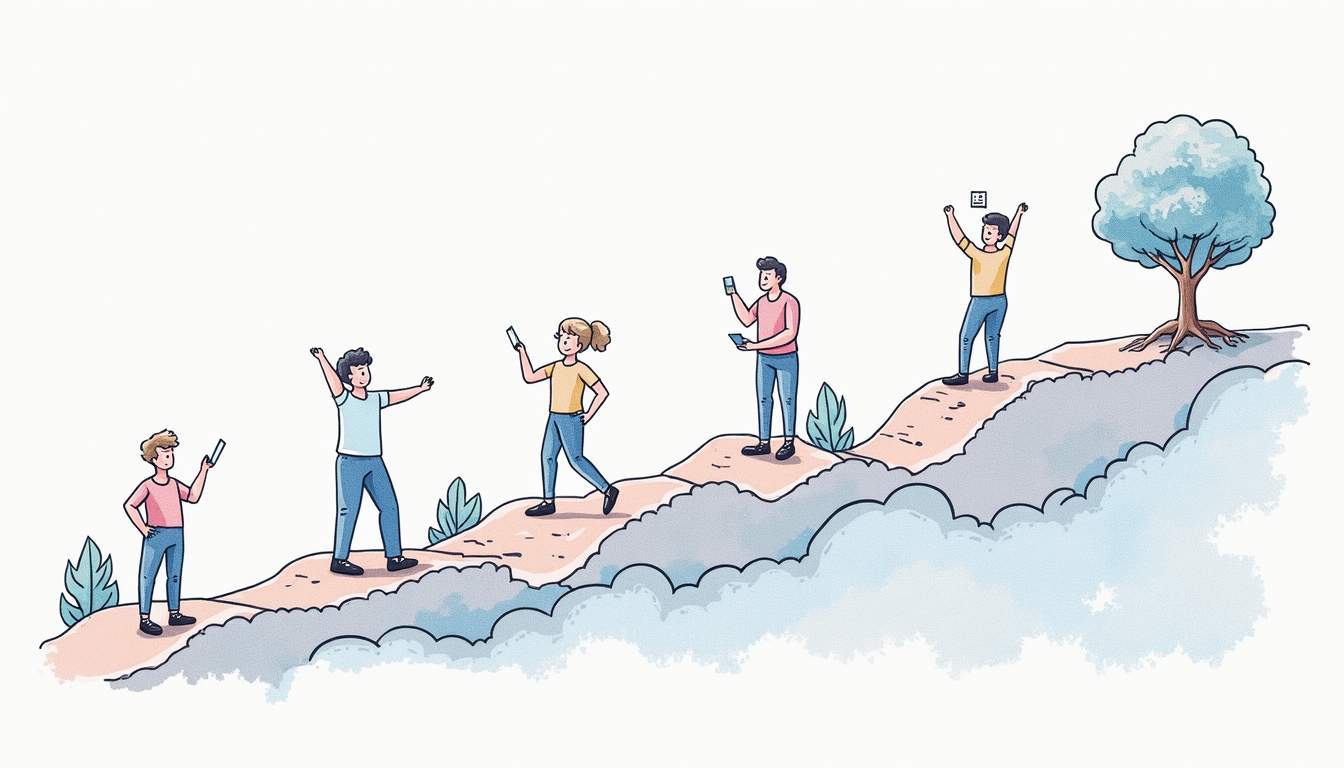In the fast-paced world of technology, having a clear and effective app development roadmap is crucial for success. A well-structured roadmap not only guides the development team but also aligns stakeholders and keeps everyone on the same page. Whether you’re a startup looking to launch your first app or an established company aiming to improve an existing product, these tips will help you create a roadmap that drives your project forward.
Understanding the Importance of a Roadmap
Before diving into the specifics of creating a roadmap, it’s essential to understand why it matters. A roadmap serves as a strategic guide that outlines the vision, goals, and milestones for your app development process. It provides clarity and direction, ensuring that everyone involved knows the priorities and timelines. Furthermore, a well-crafted roadmap can act as a motivational tool, inspiring teams by illustrating how their individual contributions fit into the larger picture of the project’s success.

Aligning Stakeholders
One of the primary benefits of a roadmap is that it aligns all stakeholders, from app developers to marketers and executives. When everyone understands the goals and timelines, it fosters collaboration and minimizes misunderstandings. Regularly updating the roadmap allows for ongoing alignment as the project evolves. Additionally, involving stakeholders in the roadmap creation process can enhance buy-in and accountability, as they feel a sense of ownership over the project’s direction and outcomes.
Managing Expectations
In any project, managing expectations is key. A well-defined roadmap helps set realistic timelines and deliverables. By clearly communicating what can be achieved and when, teams can avoid the pitfalls of scope creep and ensure that everyone is on the same page regarding project progress. This transparency not only builds trust among team members but also with external stakeholders, such as clients or investors, who may have a vested interest in the project’s success. Moreover, a roadmap can serve as a reference point for evaluating performance and making necessary adjustments, ensuring that the project remains on track even when faced with unforeseen challenges.
Facilitating Decision-Making
A comprehensive roadmap also plays a crucial role in facilitating decision-making throughout the development process. When faced with choices about feature prioritization or resource allocation, teams can refer back to the roadmap to assess how each option aligns with the overall goals and timelines. This structured approach not only streamlines the decision-making process but also helps in justifying choices to stakeholders, as they can see how decisions are grounded in the strategic vision laid out in the roadmap. Furthermore, by anticipating potential roadblocks and identifying key dependencies early on, teams can proactively address issues before they escalate, ultimately leading to a more efficient development cycle.
Key Components of an Effective Roadmap
Creating a roadmap involves several critical components that should be carefully considered. Each element plays a vital role in ensuring that the roadmap is not only informative but also actionable.
Vision and Goals
Every great roadmap starts with a clear vision. What is the ultimate goal of your app? Is it to solve a specific problem, enhance user experience, or drive revenue? Defining this vision will guide all subsequent decisions. Alongside the vision, set specific, measurable goals that you want to achieve within a given timeframe. These goals should be realistic yet ambitious, pushing the team to strive for excellence. Additionally, it’s important to communicate this vision effectively to all stakeholders involved, ensuring that everyone is aligned and motivated towards a common purpose. This alignment fosters a sense of ownership among team members, which can significantly enhance productivity and creativity throughout the development process.
Milestones and Timelines
Once the vision and goals are established, it’s time to break them down into milestones and timelines. Milestones serve as checkpoints that help track progress. They can include phases like design, development, testing, and launch. Assigning realistic timelines to these milestones keeps the team accountable and focused. Furthermore, it’s beneficial to incorporate flexibility into these timelines to accommodate unforeseen challenges or changes in market dynamics. Regularly reviewing and adjusting these milestones can help maintain momentum and ensure that the project remains on track, while also allowing the team to celebrate small wins along the way, which can boost morale and keep spirits high.
Resource Allocation
Understanding the resources available for your app development is crucial. This includes budget, personnel, and technology. A good roadmap outlines how these resources will be allocated across different phases of development. This not only helps in planning but also in identifying potential bottlenecks early on. Moreover, it’s essential to evaluate the skill sets of your team members and assign tasks that align with their strengths. This strategic allocation of human resources can lead to more efficient workflows and higher quality outputs. Regular check-ins on resource utilization can also help in making informed decisions about reallocating resources as necessary, ensuring that the project remains agile and responsive to changing needs.
Incorporating User Feedback
User feedback is invaluable in the app development process. Incorporating it into your roadmap ensures that the final product meets the needs of its intended audience.
Conducting User Research
Before even starting the development, conducting user research can provide insights into what features users want and what pain points they experience with current solutions. Surveys, interviews, and usability tests can yield valuable information that should inform the roadmap.
Iterative Development
Adopting an iterative development approach allows teams to incorporate user feedback continuously. After each milestone, gather feedback from users and stakeholders. This feedback should be analyzed and, when relevant, integrated into the roadmap. This flexibility can lead to a more user-centric product.
Staying Agile and Adaptable
The tech landscape is ever-changing, and app development is no exception. A successful roadmap must be agile and adaptable to accommodate new trends, technologies, and user needs.

Regular Reviews and Updates
Set a regular schedule for reviewing and updating the roadmap. This could be monthly, quarterly, or at the end of each milestone. During these reviews, assess what has been accomplished and what needs to change. This practice keeps the roadmap relevant and aligned with the project’s evolving needs.
Embracing Change
Change is inevitable in app development. Whether it’s a shift in user preferences, technological advancements, or market dynamics, being open to change is essential. A rigid roadmap can stifle innovation and lead to missed opportunities. Embrace change and be willing to pivot when necessary, ensuring that the roadmap remains a living document that reflects the current state of the project.
Visualizing the Roadmap
A roadmap should be visually appealing and easy to understand. A well-designed visual representation can make complex information more digestible.
Using Charts and Diagrams
Utilizing charts, diagrams, or even timelines can help convey the roadmap clearly. Visual elements can highlight milestones, timelines, and dependencies, making it easier for stakeholders to grasp the overall picture quickly. Tools like Gantt charts or Kanban boards can be particularly effective in this regard.
Keeping It Simple
While it’s important to include all necessary details, simplicity is key. Avoid cluttering the roadmap with excessive information. Focus on the most critical elements that drive the project forward. A clean, straightforward design allows for quick reference and understanding.
Communicating the Roadmap
Creating a roadmap is just the first step; effectively communicating it is equally important. The way the roadmap is presented can significantly impact its acceptance and implementation.

Engaging Presentations
When presenting the roadmap to stakeholders, make it engaging. Use storytelling techniques to explain the vision and goals. Highlight the benefits of the app and how it aligns with the company’s overall strategy. Engaging presentations can foster enthusiasm and buy-in from all parties involved.
Regular Updates to the Team
Communication should not stop after the initial presentation. Regularly update the team on progress and any changes to the roadmap. This keeps everyone informed and motivated, reinforcing the importance of their contributions to the project.
Measuring Success
To determine whether the roadmap is effective, it’s essential to establish metrics for success. These metrics will help evaluate the performance of the app against the goals set in the roadmap.
Key Performance Indicators (KPIs)
Identify KPIs that align with the goals of the app. These could include user engagement rates, download numbers, customer satisfaction scores, or revenue generated. Tracking these metrics will provide insights into how well the app is performing and whether it meets the intended objectives.
Feedback Loops
Implement feedback loops that allow for continuous improvement. After the app is launched, gather user feedback and analyze performance data to identify areas for enhancement. This ongoing evaluation should inform future iterations of the roadmap, ensuring that the app continues to evolve and meet user needs.
Conclusion
Creating a great app development roadmap is a multifaceted process that requires careful planning, collaboration, and flexibility. By understanding its importance, incorporating user feedback, staying adaptable, and effectively communicating the roadmap, teams can set themselves up for success. Remember, a roadmap is not just a document; it’s a strategic tool that guides the entire development process. With these tips in mind, organizations can create a roadmap that not only meets their immediate needs but also paves the way for future growth and innovation.
In the end, the key to a successful app development roadmap lies in its ability to evolve. As technology and user needs change, so too should the roadmap. Embrace the journey, stay focused on your goals, and watch as your app transforms from an idea into a successful product.
Bring Your App Development Roadmap to Life with Twine
Now that you’re equipped with the knowledge to create an exceptional app development roadmap, it’s time to assemble the right team to turn your vision into reality. At Twine, we understand the importance of matching you with the perfect freelance talent to complement your project’s needs. From App developers to designers, our marketplace is teeming with professionals who can help you achieve each milestone with precision and skill. Don’t let resource constraints hold you back. Post your requirements for free and start collaborating with expert freelancers who can help you navigate your app development journey with confidence and expertise.




